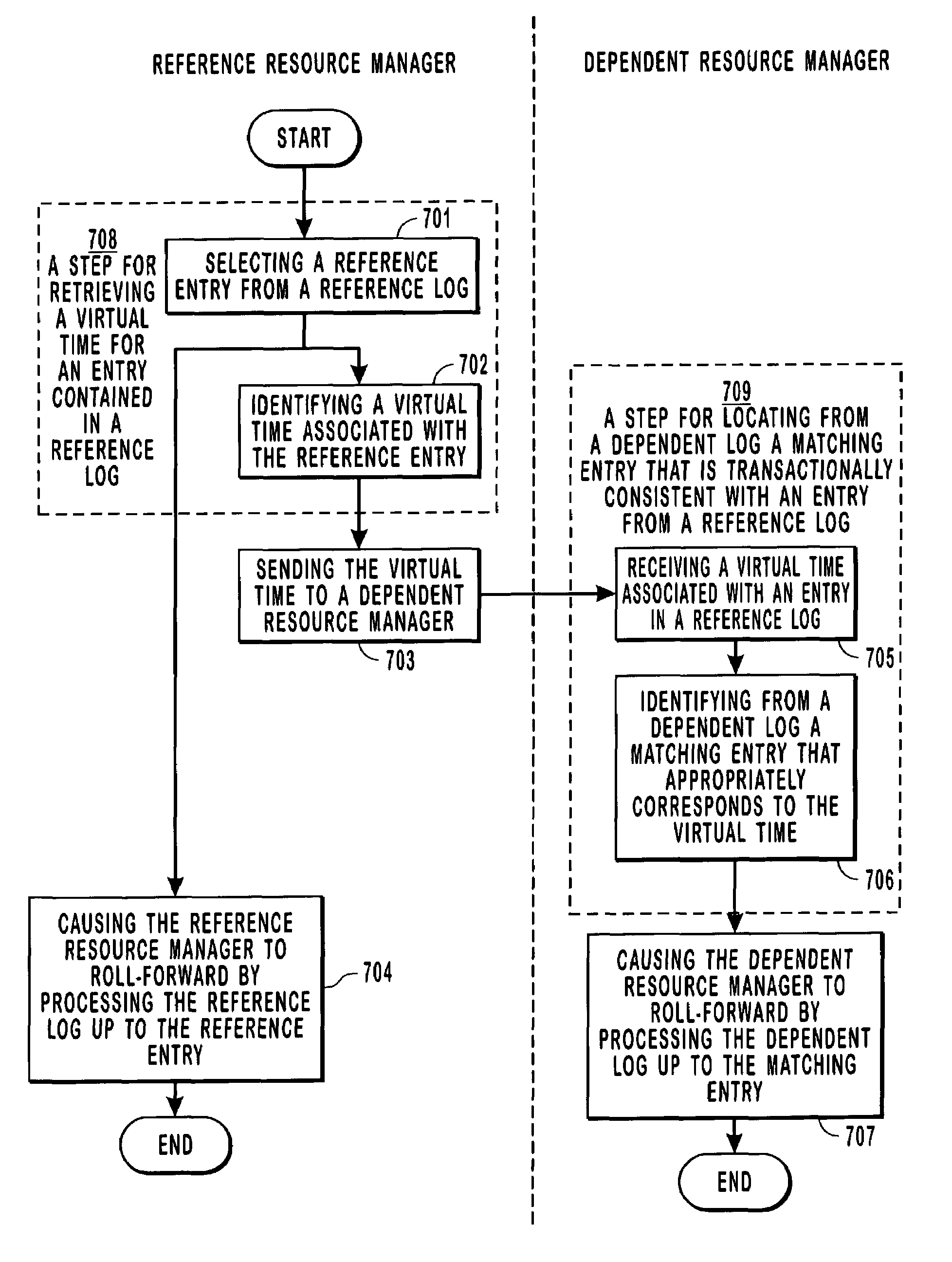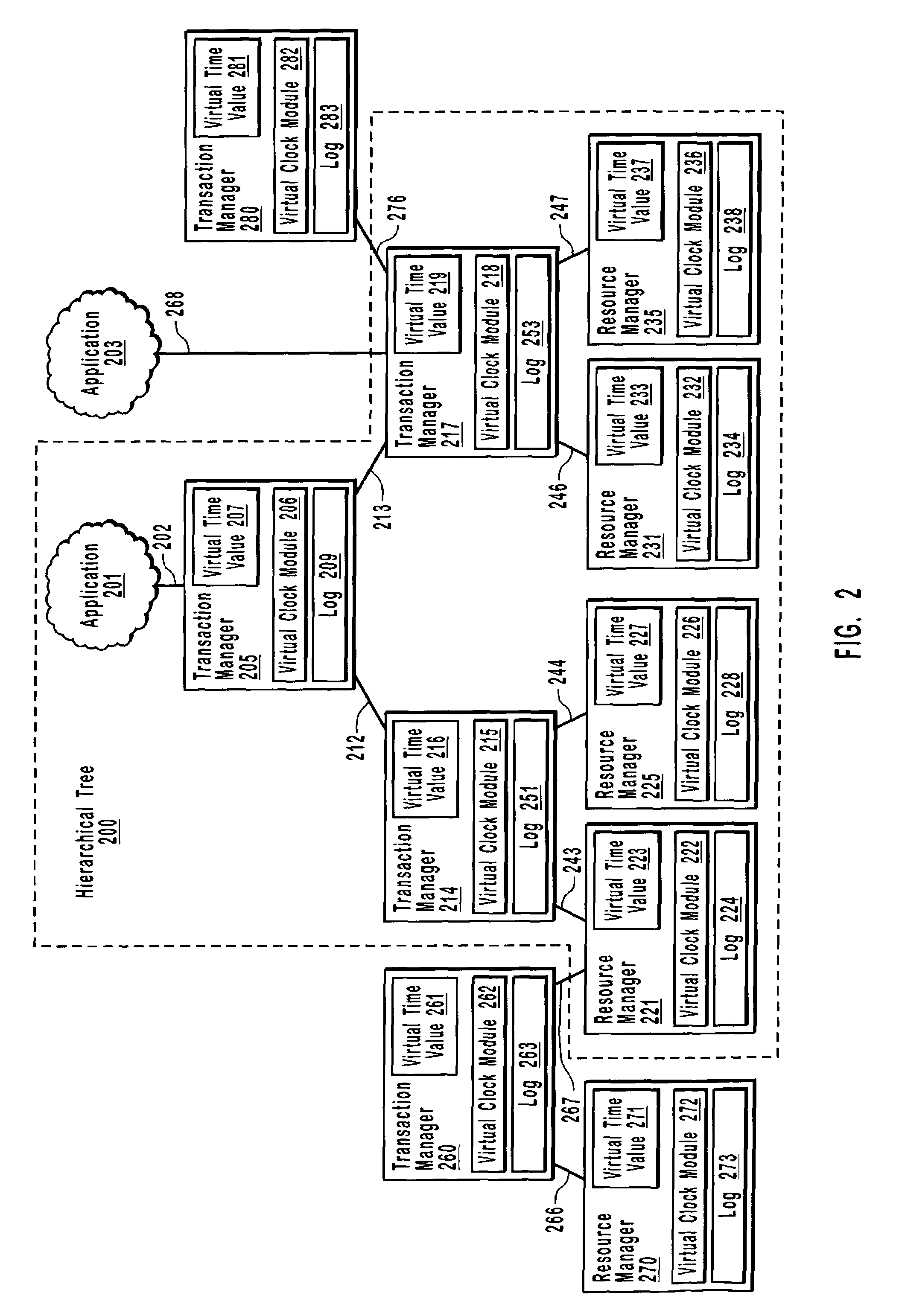Identifying a common point in time across multiple logs
a common point and log technology, applied in the field of rolling forward through logs, can solve the problems of increasing the chance of a distributed system placement, affecting the speed of data processing, and requiring a significant amount of time for a user to transition a number of different individual storage locations
- Summary
- Abstract
- Description
- Claims
- Application Information
AI Technical Summary
Benefits of technology
Problems solved by technology
Method used
Image
Examples
Embodiment Construction
[0034]The present invention extends to systems, methods, and computer program products for identifying a common point in time across a plurality of logs. Each node in a distributed system maintains a virtual time according to specified rules. In some embodiments, these rules specify that nodes always maximize their virtual time values and that a node's virtual time value is incremented after a log entry is written to a node's log. A virtual time stamp can be included in a log entry to record the virtual time an operation identified in the log entry was performed. During a roll-forward recovery involving logs for a plurality of nodes, an entry from each log corresponding to a desired reference virtual time can be identified. Each node can then roll-forward through a corresponding log to the appropriate log entry corresponding to the reference virtual time.
[0035]The embodiments of the present invention may comprise a general-purpose or special-purpose computer system including various...
PUM
 Login to View More
Login to View More Abstract
Description
Claims
Application Information
 Login to View More
Login to View More - R&D
- Intellectual Property
- Life Sciences
- Materials
- Tech Scout
- Unparalleled Data Quality
- Higher Quality Content
- 60% Fewer Hallucinations
Browse by: Latest US Patents, China's latest patents, Technical Efficacy Thesaurus, Application Domain, Technology Topic, Popular Technical Reports.
© 2025 PatSnap. All rights reserved.Legal|Privacy policy|Modern Slavery Act Transparency Statement|Sitemap|About US| Contact US: help@patsnap.com



